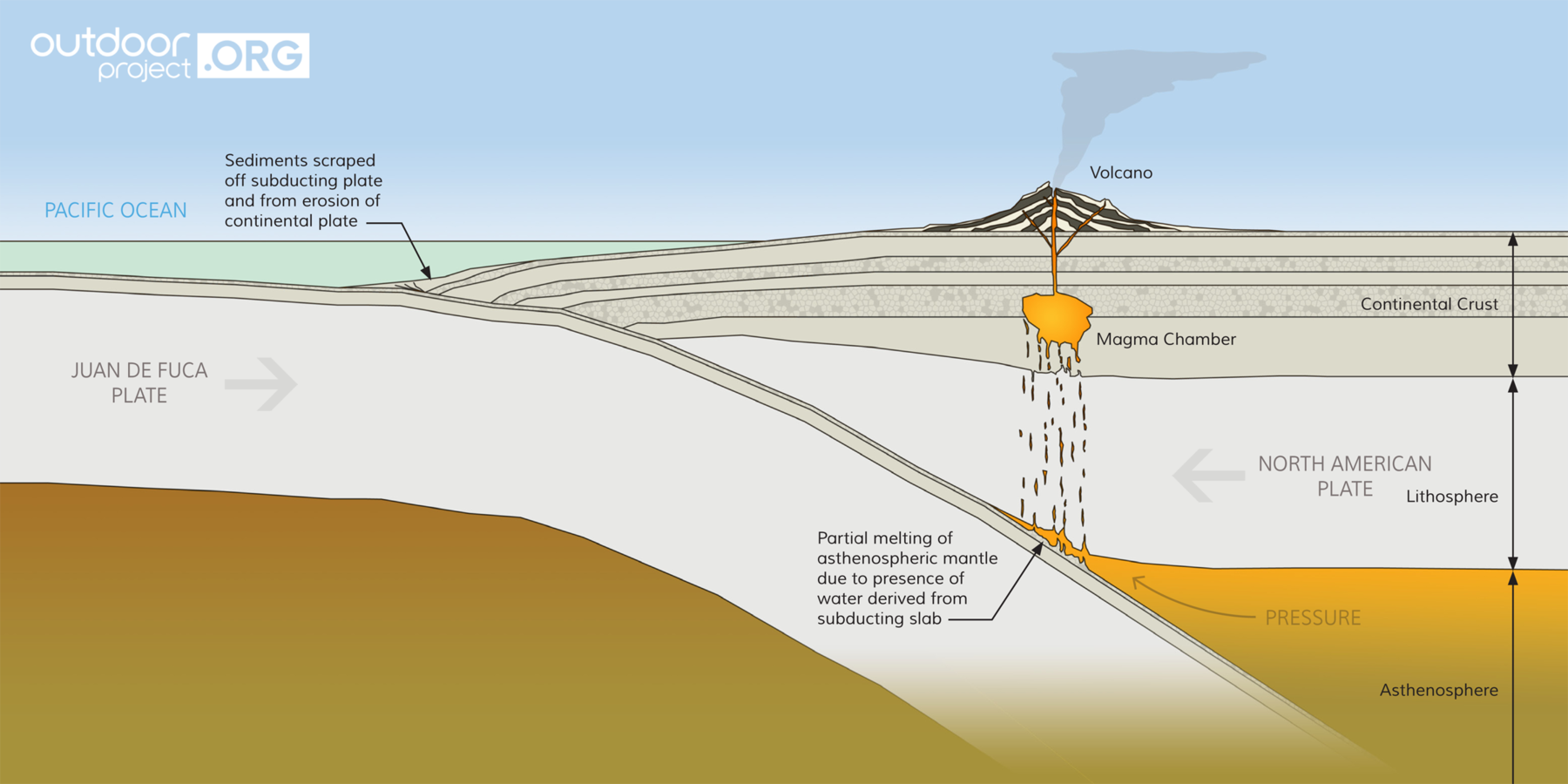
Posted on 12/07/2018 10:15:20 AM PST by ETL
In order to erupt, volcanoes need a source of magma — melted, liquid rock — containing relatively few solid crystals.
Traditionally, this magma was thought to be formed and stored in a magma chamber.
Recent studies of magma chemistry have challenged this view, leading to the suggestion of the 'mush' reservoir model, where smaller pools of magma sit in the small gaps between solid crystals.
However, the mush reservoir model could not explain how magmas containing relatively few crystals arise and are delivered to volcanoes in order for them to erupt at the surface.
Now, with sophisticated modeling of mush reservoirs, Professor Jackson and co-authors come up with a solution.
Within the mush reservoir scenario, the magma is less dense than the crystals, causing it to rise up through the spaces between them.
As it rises, the magma reacts with the crystals, melting them and leading to local areas containing magma with relatively few crystals. It is these short-lived areas of increased magma that can lead to eruptions.
“A major mystery about volcanoes is that they were thought to be underlain by large chambers of molten rock. Such magma chambers, however, were very difficult to find,” said co-author Professor Stephen Sparks, from the University of Bristol.
“The new idea is that molten rock forms within largely crystalline hot rocks, spending most of its time in little pores within the rock rather than in large magma chambers.”
“However, the rock melt is slowly squeezed out to form pools of melt, which can then erupt or form ephemeral magma chambers.”
As well as the initiation of eruptions, the new mush reservoir model can help explain other phenomena in volcanic systems, such as how the magma chemical composition evolves and how much older crystals can be erupted within younger magmas.
(Excerpt) Read more at sci-news.com ...

Volcanoes are not fed by molten magma formed in large chambers, finds a new study, overturning classic ideas about volcanic eruptions.
Instead, the study suggests that volcanoes are fed by so-called ‘mush reservoirs’ – areas of mostly solid crystals with magma in the small spaces between the crystals.
Our understanding of volcanic processes, including those leading to the largest eruptions, has been based on magma being stored in liquid-filled ‘magma’ chambers – large, underground caves full of liquid magma. However, these have never been observed.
The new study, by researchers at Imperial College London and the University of Bristol and published today in Nature, suggests the fundamental assumption of a magma chamber needs a re-think.
Lead author Professor Matthew Jackson, from the Department of Earth Sciences and Engineering at Imperial, said: “We now need to look again at how and why eruptions occur from mush reservoirs. We can apply our findings to understanding volcanic eruptions with implications for public safety and also to understand the formation of metal ore deposits associated with volcanic systems.”
Erupting from mush reservoirs
In order to erupt, volcanoes need a source of magma – melted, liquid rock – containing relatively few solid crystals. Traditionally, this magma was thought to be formed and stored in large underground magma chambers.
Recent studies of magma chemistry have challenged this view, leading to the suggestion of the mush reservoir model, where smaller pools of magma sit in the small gaps between solid crystals. However, the mush reservoir model could not explain how magmas containing relatively few crystals arise and are delivered to volcanoes in order for them to erupt at the surface.
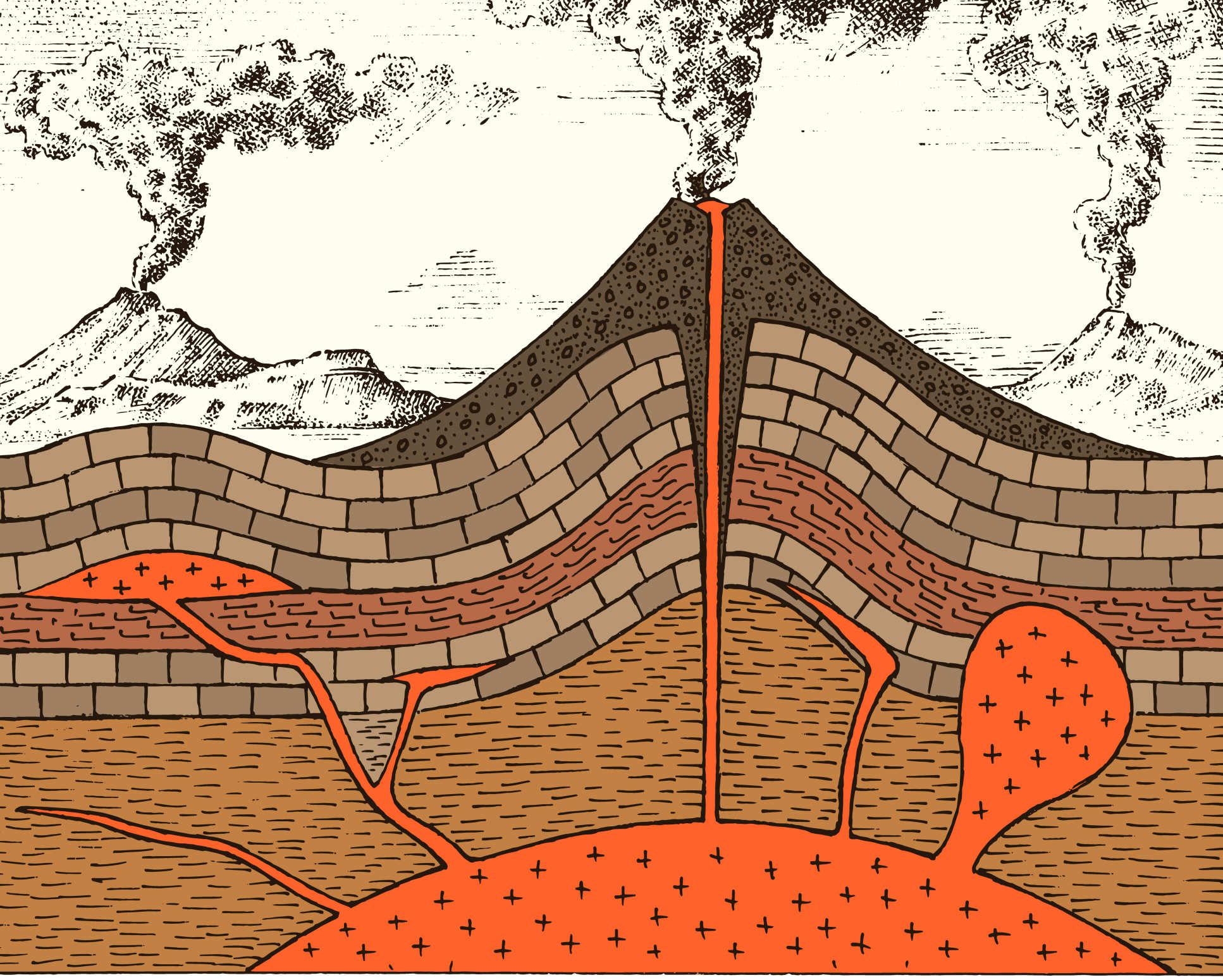
Now, with sophisticated modelling of mush reservoirs, the research team has come up with a solution. Within the mush reservoir scenario, the magma is less dense than the crystals, causing it to rise up through the spaces between them.
As it rises, the magma reacts with the crystals, melting them and leading to local areas containing magma with relatively few crystals. It is these short-lived areas of increased magma that can lead to eruptions.
A major mystery solved
Co-author Professor Stephen Sparks, from the University of Bristol’s School of Earth Sciences, said: “A major mystery about volcanoes is that they were thought to be underlain by large chambers of molten rock. Such magma chambers, however, were very difficult to find.
“The new idea developed by geologists at Imperial and Bristol is that molten rock forms within largely crystalline hot rocks, spending most of its time in little pores within the rock rather than in large magma chambers. However, the rock melt is slowly squeezed out to form pools of melt, which can then erupt or form ephemeral magma chambers.”
As well as the initiation of eruptions, the new mush reservoir model can help explain other phenomena in volcanic systems, such as how the magma chemical composition evolves and how much older crystals can be erupted within younger magmas.
https://www.imperial.ac.uk/news/189371/volcanoes-mush-reservoirs-rather-than-molten/
That handy model could be used to explain a lot of things... 
So, the question is how can scientists locate the mush reservoirs?
Look in the skrools
Online - $4.99 a container...
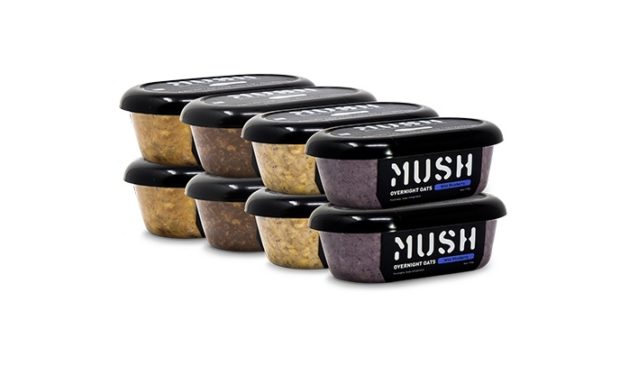
So then this is unlikely?

Temporal gravity stations. They use those to find new magma intrusion into old magma chambers such as Long Valley in California. The mixing of new magma into old results in the most catastrophic eruptions. Some search on magma mixing will make you think the end is near.
Bowen’s reaction series
Within the field of geology, Bowen’s reaction series is the work of the petrologist, Norman L. Bowen[1] who summarized, based on experiments and observations of natural rocks, the crystallization sequence of typical basaltic magma undergoing fractional crystallization (i.e., crystallization wherein early-formed crystals are removed from the magma by crystal settling, say, leaving behind a liquid of slightly different composition).[2]
Bowen’s reaction series is able to explain why certain types of minerals tend to be found together while others are almost never associated with one another.
He experimented in the early 1900s with powdered rock material that was heated until it melted and then allowed to cool to a target temperature whereupon he observed the types of minerals that formed in the rocks produced.
He repeated this process with progressively cooler temperatures and the results he obtained led him to formulate his reaction series which is still accepted today as the idealized progression of minerals produced by cooling basaltic magma that undergoes fractional crystallization. Based upon Bowen’s work, one can infer from the minerals present in a rock the relative conditions under which the material had formed.[3]
Description
The series is broken into two branches, the continuous and the discontinuous. The branch on the right is the continuous. The minerals at the top of the illustration (given aside) are first to crystallize and so the temperature gradient can be read to be from high to low with the high temperature minerals being on the top and the low temperature ones on the bottom. Since the surface of the Earth is a low temperature environment compared to the zones of rock formation, the chart also easily shows the stability of minerals with the ones at bottom being most stable and the ones at top being quickest to weather, known as the Goldich dissolution series.
This is because minerals are most stable in the conditions closest to those under which they had formed. Simply put, the high temperature minerals, the first ones to crystallize in a mass of magma, are most unstable at the Earth’s surface and quickest to weather because the surface is most different from the conditions under which they were created. On the other hand, the low temperature minerals are much more stable because the conditions at the surface are much more similar to the conditions under which they formed.
https://en.wikipedia.org/wiki/Bowen%27s_reaction_series

Very interesting.
So it might rain diamonds?
That is not far from the truth...
Diamonds are brought to the surface from the mantle in a rare type of magma called kimberlite and erupted at a rare type of volcanic vent called a diatreme or pipe.

Kimberlite is a gas-rich, potassic ultramafic igneous rock that contains the minerals olivine, phlogopite, diopside, serpentine, calcite, and minor amounts of apatite, magnetite, chromite, garnet, diamond, and other upper mantle minerals.
Upper mantle xenoliths are found in some kimberlite and provide clues to the magma’s origin.
The source depth for kimberlite magmas is estimated at 200 km, more than twice as deep as the source region for most magmas.
At a depth of 200 km the pressure is 60,000 times greater than the surface and the temperature is about 1500 C.
Kimberlite magmas are rich in carbon dioxide and water which brings the magma quickly and violently to the surface.
Most kimberlites occur as multiple intrusive events.
Kimberlite was named for the rock associated with diamonds in Kimberley, South Africa.
Kimberlite magmas form “pipes” as they erupt. A tuff cone is at the surface and formed by base-surge deposits.
In the subsurface, a funnel-shaped body narrows to a depth of hundreds of meters.
The pipe (also called a diatreme) is filled with kimberlite, with or without diamonds (only 1 in 5 of the pipes at Kimberley contain diamonds).
Just how many diamonds are needed to make aa pipe economical?
Some South African mines operate at 25 carats of diamond per 100 cubic meters of rock or about 2 grams of diamonds per 100 tons of rock.
Because diamond has a specific gravity of 3.5 grams per cubic centimeter, 1 cubic centimeter of diamond weighs 16 carats.
Picture a giant 100-ton ore truck full of kimberlite - that truck contains only half of a cubic centimeter of diamonds! Only about 35% of those diamonds are gem quality.


Diamonds might not be the rarest of geologic materials, but they can be some of the most valuable. Where do we get them all? It takes extremely high pressures to reorganize carbon into diamonds—pressures higher than can easily be mimicked by humans or even created by processes within the Earth’s crust. No, diamonds have to come from the Earth’s mantle, hundreds of kilometers beneath our feet.
But how do those diamonds get to the surface for us to collect (and sell)? The answer lies in some of the oddest and rarest volcanoes on the planet.
Kimberlites are volcanic eruptions that bring material from the depths where diamonds can form. Yet, unlike many geologic processes, a kimberlite eruption could launch rocks from the mantle at over 250 kilometers an hour! Yes, you read right: Kimberlite eruptions might be rocket ships from the Earth’s interior.
Kimberlite magma is what geologists call “ultramafic.” All that means is it is low in silica and high in magnesium (relative to other magma). What makes them cool is that they are likely coming directly from the mantle—that layer of rock beneath the Earth’s crust. Even at its thickest, the crust is only ~70 kilometers thick, but the source of kimberlite magma is likely over 200 kilometers down. So, in kimberlite deposits, we find all sorts of chunks of mantle rocks and minerals, along with chunks of the crust that the kimberlite blasted through (we call these chunks “xenoliths”—foreign rocks).
Kimberlites themselves are best described as “carrot-shaped,” where they widen at the top and narrow at depth until they reach the dyke of magma that was the pathway from their source deep in the mantle. The tops of the pipes might be tens to hundreds of meters wide, but at depth, they are likely only a few meters across.
When they erupt, they produce piles of broken volcanic debris (pyroclastic material) and the cone is filled with kimberlite breccia made from magma, xenoliths, and anything else in the way. They never have lava flows and even the debris isn’t large volume, probably millions of cubic meters rather than the billions (and more) cubic meters of more typical explosive volcanic eruptions.
They aren’t common. Most kimberlites are found in areas of the oldest rocks on Earth known as continental cratons. There are some found outside those cratons (such as the kimberlites of Kentucky and Arkansas) but they are still typically found where the rocks are old. Geologists aren’t too sure why that is, but globally, you find a lot of places where there is old crust like Canada, Brazil, Siberia, South Africa, northern China, and Australia.
Most kimberlites are old, too, forming from the Proterozoic (between 541 million and 2.5 billion years ago) up to the Cretaceous (79-145 million years ago). However, there are a few places where geologists think youngest kimberlites may have erupted, including the Igwisi Hills in Tanzania that might be only ~10-20,000 years old and the ~30 million-year-old Kundulungu Group on the DR Congo. So, kind of like big flood basalt provinces and komatiite lavas, kimberlites seem to have been more common in the planet’s past.
That doesn’t mean they can’t happen today! What might a kimberlite eruption be like if we had one in the middle of Kentucky (or really anywhere in central North America)?
This is where things get a little more speculative. Considering we’ve never seen a kimberlite eruption, we have to try to back out the events that happen and the timing of the eruption using clues in the rocks—like how minerals shatter, the types of material found in the deposits, and the shapes of the pipes. Really, it comes down to making, well, magmatic soda.
How to Make Diamonds
Kimberlite eruptions likely start when a carbon dioxide-rich magma forms from melting the mantle. That magma could end up with almost 20 percent carbon dioxide by weight, which is much higher than typical magma (that might be only a couple percent). This magma forms 250 kilometers below the surface and is so low in density, it begins to rise rapidly.
As it rises, all the CO2 begins to come out of solution and form a tip on the rising magma. That CO2 foam sneaks into cracks and shatters the rock, allowing for more rising. Behind it follows the kimberlite magma that is still degassing at faster and faster rates, making a magmatic foam that trails the CO2 foam. Really, it is like one big magma soda bottle whose top has been popped. By the time the magma reaches the surface, the foam tip might be 2 to 4 kilometers long moving through that ~1-3 meter pipe.
With all this foam rising through rocks that are under pressure, that dramatic change in stress causes the walls of the pipe to shatter, adding more material to the kimberlite magma as it rises. At times, the kimberlite magma is likely rising behind the CO2 and magma foam at 30 to 50 meters per second. That’s over 100 kilometers per hour.
The gas and foam? By the time it’s close to the surface, it might be moving close to 300 to 600 meters per second … over ~1,000 kilometers per hour! So, the trip from the mantle to the surface might only take one hour to get all the gas, foam and magma to the surface
Now, if you’re on the surface before a kimberlite eruption, this means that you won’t have much in the way of signs that an eruption is going to occur. Once the process starts, you would guess that earthquakes would start to be measured from depth and rapidly rising towards the surface as the magma moves and shatters rock. You would also likely get some tremor associated with the magma moving through the pipe.
However, the rapid nature of the event means that earthquakes might be the only sign until the kimberlite magma and foam is near the surface, when [totally speculative] we could notice an increase in CO2 emissions from the ground or very fast deformation of the area where the eruption will occur. Humans have never experienced at kimberlite eruption, so this would be a whole new world of monitoring and mitigation to prevent casualties if this happens under a populated area.
Once the foam tip of the kimberlite magma reaches the surface, there is going to be a big explosion. All that compressed gas and magmatic foam will now expand rapidly, creating a massive jet of CO2, volcanic debris, random chunks of rock from around the vent, magma and whatever else might be in the way. Depending on how much stuff is mixed it, the plume could rise as fast as over 1 kilometer per second, so it could reach 20-30 kilometers height in a few minutes—so, think something like the eruption of Mount St. Helens in 1980.
However, that rapid decompression creates a blast wave that will travel down as well as up. The wave will propagate back into the pipe at half the speed of sound, creating more degassing of the magma continuing to rise and extending the explosive eruption.
At the same time, the drop in pressure in the pipe causes the walls of the pipe to start to collapse, heralding the beginning of the end. All the magma in the pipe will cool rapidly and solidify, mixing with all the debris to create the mixed up kimberlite breccia. The waves of all these decompression explosions will resonate in the pipe, making a pulsing explosive eruption. However, the whole thing would likely be over in tens of minutes as the wall collapses and the rising magma cools.
The surrounding landscape would be covered in volcanic ash and debris, some made of erupting magma, some made of chunks of mantle and crust xenoliths. The deposit wouldn’t likely be thick, but you could imagine anything within a few kilometers of the vent would be hit with a rain of ballistic bombs and shockwaves from the eruption.
The crater might only be the size of a large sinkhole, but the halo of volcanic debris would extend tens of kilometers. (Sadly, it wouldn’t rain diamonds. They mostly end up in the solidified magma in the crater or dyke beneath it).
After the eruption, the crater, now filled with the porous debris of the eruption, would likely fill up and form a small crater lake. Luckily, kimberlites appear to be monogenetic—that is, they erupt once and are done. Less luckily, they tend to form in clusters, so whatever area experiences the first kimberlite eruption might expect more to come. However, the timing is unknown. Would it be in hours, days, months, years? We don’t know.
In the end, an eruption of a modern kimberlite would be one of the more dramatic geologic events we’ve experienced. In the span of what might be as little as an hour, material from the mantle would be thrown to the surface in a massive explosion that ends as fast as it started. The area around the vent would be devastated, but likely no long-lasting or wide-reaching impacts would be noticed (unless maybe a bunch of kimberlites erupted within days of each other?) Hopefully, it happens far from human populations so we can just enjoy the scientific bounty that would come from such an eruption. Just another way the Earth can make life exciting for those of us who populate the surface.
https://www.wired.com/2017/05/crazy-eruptions-spit-diamonds/
Same way you locate other underground features. Gravimetry and Gravity Gradiometry, for example, or monitoring both natural and artificial seismic disturbances. The petroleum industry does this routinely to detect possible oil and gas reservoirs.
You can tell by looking at a typical section of granite which minerals formed first and which later filled in the space in between.
The "rectangular" pink mineral is potassium feldspar. It was first to form, so it has a crystal shape. The tiny gray mineral is quartz. The white and the dark specks are other minerals.
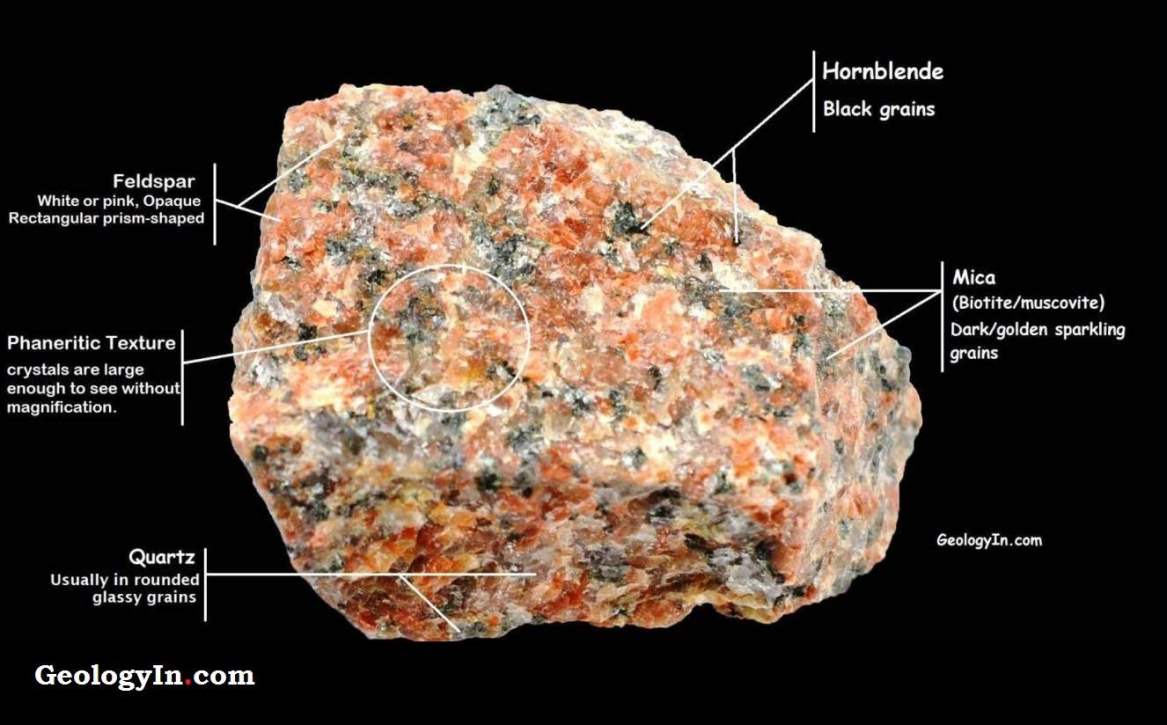
*ping*
Nice pictures ... one can learn a lot of geology from a visit to a kitchen countertop store.
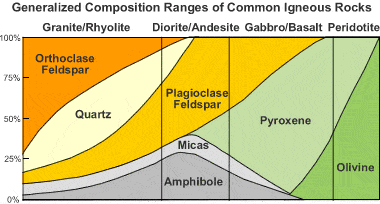
Thanks fieldmarshaldj. I can't see "volcano" without thinking of Doctor Evil. Been a problem for years now.
|
Disclaimer: Opinions posted on Free Republic are those of the individual posters and do not necessarily represent the opinion of Free Republic or its management. All materials posted herein are protected by copyright law and the exemption for fair use of copyrighted works.